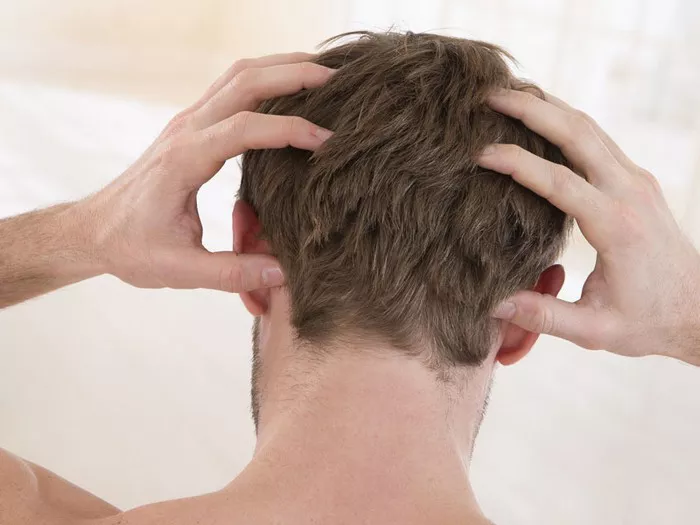Alopecia areata, a common autoimmune disorder, can be a distressing experience for those affected. The sudden onset of hair loss in well-defined patches can raise concerns about the possibility of regrowth. In this article, we will explore the potential for hair regrowth after alopecia areata, considering various factors that influence the recovery process.
Understanding Alopecia Areata: A Brief Recap
Alopecia areata is an autoimmune condition where the immune system mistakenly attacks hair follicles, leading to hair loss. The exact cause is not fully understood, but genetic predisposition, immune system responses, and environmental factors contribute to its development.
The Stages of Hair Loss in Alopecia Areata
Initial Hair Loss:
Alopecia areata typically presents as round or oval patches of hair loss on the scalp or other parts of the body.
The hair loss is often rapid and can occur symmetrically on both sides of the scalp.
Progression to Extensive Hair Loss:
In some cases, alopecia areata may progress to more extensive hair loss, involving larger areas or even the entire scalp (alopecia totalis) or body (alopecia universalis).
The severity and extent of hair loss vary among individuals.
Factors Influencing Hair Regrowth
Individual Variation:
The likelihood of hair regrowth after alopecia areata varies widely among individuals.
Some may experience spontaneous regrowth without intervention, while others may face challenges in restoring their hair.
Severity of Alopecia Areata:
The severity of the condition plays a role in predicting regrowth. Mild cases with limited hair loss may have a higher chance of spontaneous recovery.
Duration of Hair Loss:
The duration of hair loss is a crucial factor. Shorter periods of hair loss may have a more favorable prognosis for regrowth compared to longer durations.
Natural Regrowth in Alopecia Areata
Spontaneous Regrowth:
In many cases, individuals with alopecia areata experience spontaneous regrowth without specific treatment.
The hair may begin to grow back in the affected areas, starting with fine, colorless hairs (vellus hairs) that later become thicker and pigmented.
Recovery Patterns:
The regrowth patterns can be unpredictable. Hair may return in the same pattern as before or in a different arrangement.
The regrowth process can take weeks to months, and the rate varies among individuals.
Medical Interventions for Hair Regrowth
Topical Treatments:
Corticosteroid creams or ointments may be prescribed to reduce inflammation and stimulate hair regrowth in localized cases.
These treatments are often applied directly to the affected areas.
Intralesional Corticosteroid Injections:
In more extensive cases, dermatologists may recommend injections of corticosteroids directly into the affected areas to promote regrowth.
Immunomodulatory Therapies:
Emerging treatments, such as Janus kinase (JAK) inhibitors, show promise in modulating the immune system to promote hair regrowth.
Ongoing research is exploring the efficacy and safety of these innovative therapies.
Considerations for a Positive Outcome
Early Intervention:
Seeking medical attention early in the course of alopecia areata increases the chances of successful treatment and regrowth.
Prompt diagnosis and intervention contribute to better outcomes.
Holistic Approach:
Adopting a holistic approach to overall health can support the regrowth process. A balanced diet, stress management, and a healthy lifestyle contribute to hair health.
Challenges and Realities of Hair Regrowth
Recurrence and Relapses:
Despite regrowth, individuals with alopecia areata may experience recurrence or relapses, where hair loss reoccurs after a period of regrowth.
Managing expectations and adopting a long-term perspective is crucial.
Persistent Hair Loss:
In some cases, alopecia areata may persist, and regrowth may be challenging. The severity and extent of hair loss influence the likelihood of persistent symptoms.
Conclusion
In conclusion, the potential for hair regrowth after alopecia areata is influenced by various factors, including the severity of the condition, the duration of hair loss, and individual responses to treatment. While spontaneous regrowth is common, medical interventions such as corticosteroids and emerging immunomodulatory therapies can enhance the regrowth process. Early intervention, a holistic approach to health, and managing expectations contribute to positive outcomes. It’s essential for individuals with alopecia areata to consult with dermatologists for personalized guidance and treatment options tailored to their specific needs. The journey to regaining hair and confidence involves a combination of medical support, patience, and a proactive approach to overall well-being.

